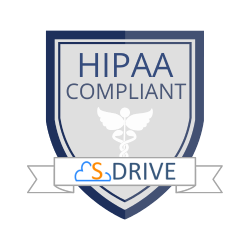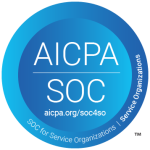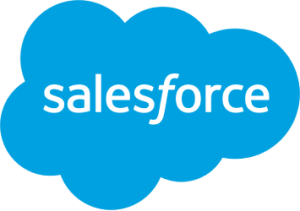In 2025, Salesforce Admins are no longer behind-the-scenes problem solvers, they’re strategic architects of digital transformation. With businesses pushing toward more efficient, secure, and intelligent systems, Admins are expected to lead the charge in process automation, data management, and user enablement. One of the most impactful yet often underestimated areas for Admin-led transformation?
Document workflows.
Whether it’s customer contracts, compliance forms, or internal approvals, document management remains a critical (and often inefficient) component of business operations. When files, forms, and signatures aren’t embedded into your Salesforce ecosystem, they slow everything down. As digital expectations rise, 2025 is the year Admins must prioritize smarter, automated, and secure document workflows.
Why Document Automation is a 2025 Imperative
Today’s organizations face increasing pressure to move faster, comply with tighter regulations, and enable remote teams, all while safeguarding sensitive data. According to a 2024 IDC report, 80% of businesses cite document-centric processes as a barrier to full digital transformation.
Despite Salesforce being the system of record, many teams still rely on disconnected tools like shared drives, email attachments, or manual uploads for handling documents. This not only breaks the flow of work, it also creates compliance gaps, version confusion, and security risks.
In 2025, Salesforce Admins have the opportunity to eliminate these pain points by embedding document automation directly into the CRM workflows they manage.
Common Document Management Challenges Admins Can Solve
Let’s take a look at some of the recurring challenges Admins encounter across departments:
- Manual document collection delays projects and customer onboarding.
- Disorganized file storage leads to lost data and scattered records.
- Outdated eSignature workflows break audit trails and cause compliance headaches.
- Lack of access control puts sensitive information at risk.
- No visibility into who uploaded what, and when.
These aren’t minor inconveniences, they’re operational risks that Salesforce Admins are uniquely positioned to fix.
What Smart Document Workflows Look Like in 2025
The future of document management is proactive, automated, and integrated into your CRM ecosystem. Here’s what that looks like in action:
- Trigger-based document requests: Salesforce automatically requests specific documents when a record reaches a certain stage.
- Secure upload portals: Customers or partners upload files directly to Salesforce via a secure link.
- eSignature automation: Contracts and agreements are signed electronically and stored to the appropriate record.
- Role-based file access: Admins define who can view or manage files, using Salesforce permissions.
- Audit-ready compliance: Every interaction is logged, encrypted, and easy to report on.
Tools like S-Drive, a document management solution built natively on Salesforce, make it possible to achieve all of this without complex workarounds or third-party systems.
Steps Admins Can Take to Automate Document Workflows
1. Audit Current Workflows
Start by identifying where document-related delays or risks occur. Are contracts being emailed around for signature? Are sales reps saving files to desktops or shared drives? Create a map of your current processes so you can pinpoint areas for automation.
2. Prioritize High-Impact Use Cases
Focus on the workflows that impact revenue, compliance, or onboarding. A few examples:
- Sales contracts
- Loan applications
- Healthcare intake forms
- Student registration packets
- Partner onboarding documentation
3. Use Flow Builder for Automation
Leverage Salesforce Flow to automate key actions like:
- Requesting documents when a field changes
- Notifying users when a document is uploaded
- Automatically routing signed files to the correct object
Pair these flows with a native document management solution to manage files at scale, securely, and compliantly.
4. Integrate eSignature and Collaboration Tools
Streamline approvals with tools like DocuSign or Adobe Acrobat Sign, integrated directly into Salesforce. For internal collaboration, integrations with Microsoft 365 allow users to edit Word, Excel, or PowerPoint files in real time—without leaving the platform.
5. Implement Governance and Reporting
Ensure compliance by:
- Enforcing naming conventions and file types
- Logging every upload and download
- Running reports on missing documents or inactive uploads
- Managing storage with scalable solutions like Amazon S3 via integrated apps
The Role of Admins Is Expanding—So Should Their Toolset
Salesforce Admins in 2025 are being asked to do more than ever: connect data, reduce friction, maintain compliance, and enable end-users—all within the Salesforce ecosystem. Document workflow automation is one of the most effective ways to deliver on all these goals simultaneously.
By integrating tools like S-Drive, Admins can create automated, secure, and compliant document workflows that serve every department—from Sales and HR to Legal and Support.
Final Thoughts: Rethinking Document Workflows as Core Automation
Documents aren’t going away. But the way we manage them can evolve. In 2025, forward-thinking Salesforce Admins are embedding document processes into every workflow—from the first customer interaction to final signature and storage. When done right, this not only boosts efficiency and compliance, it makes Salesforce the true center of operational excellence. If you haven’t yet prioritized document workflow automation in your Salesforce roadmap, now’s the time. Your users and your business will thank you.
Contact S-Drive today to learn how you can automate, secure, and scale your document management processes without leaving Salesforce



